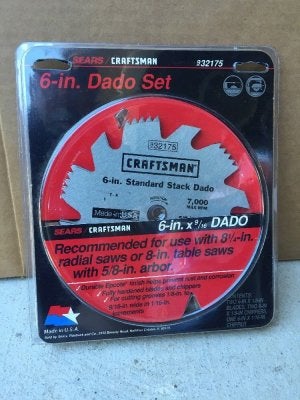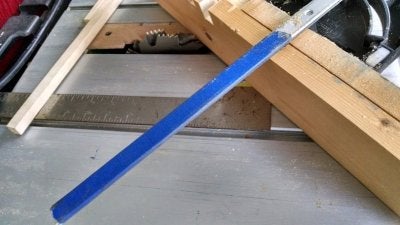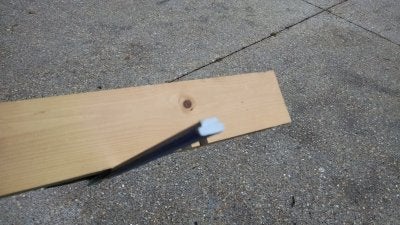Michael A.
Tele-Afflicted
I just built my first speaker cabinet, using a $10 new set of Craftsman dado blades. The wood is recycled 11.5" pine shelves from a bookcase removed from my rental house. I have zero experience with precision woodworking, and my $100 table saw has many issues and got only terrible reviews when introduced.
First, is there a trick to avoid having to cut some boards from inside to outside faces? I got very clean cuts when cutting the outside of the boards inward, but they were raggy when going from inside to outside, with some chip out. See pic 3. However, it was the only way I knew to allow me to get the fingers matching on each end of the board.
Second, I got some joints with some voids, even when clamped down as tightly as I could with the limited equipment I have access to. Can/should these gaps be filled with wood filler before sanding the joints down? I did make a sled for cutting the fingers.
Last, is it customary to round over the fingers, and is there are recommended technique when the joints are not quite perfectly flush and there are some low spots?
Don't go too hard on me for not getting everything perfect yet still going ahead and gluing it up! It does seem to be very sturdy.
I tried hard to get all of the pieces to have matching grain, and that succeeded pretty well.
The speaker will be a 1960s 15" Heppner alnico, I think from a Hammond organ. Only $15 from OfferUp.

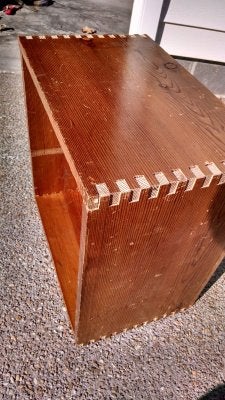

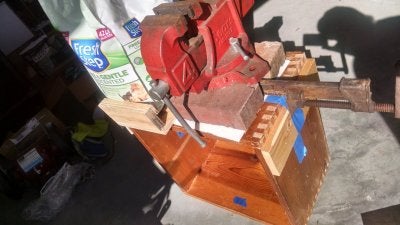

First, is there a trick to avoid having to cut some boards from inside to outside faces? I got very clean cuts when cutting the outside of the boards inward, but they were raggy when going from inside to outside, with some chip out. See pic 3. However, it was the only way I knew to allow me to get the fingers matching on each end of the board.
Second, I got some joints with some voids, even when clamped down as tightly as I could with the limited equipment I have access to. Can/should these gaps be filled with wood filler before sanding the joints down? I did make a sled for cutting the fingers.
Last, is it customary to round over the fingers, and is there are recommended technique when the joints are not quite perfectly flush and there are some low spots?
Don't go too hard on me for not getting everything perfect yet still going ahead and gluing it up! It does seem to be very sturdy.
I tried hard to get all of the pieces to have matching grain, and that succeeded pretty well.
The speaker will be a 1960s 15" Heppner alnico, I think from a Hammond organ. Only $15 from OfferUp.









